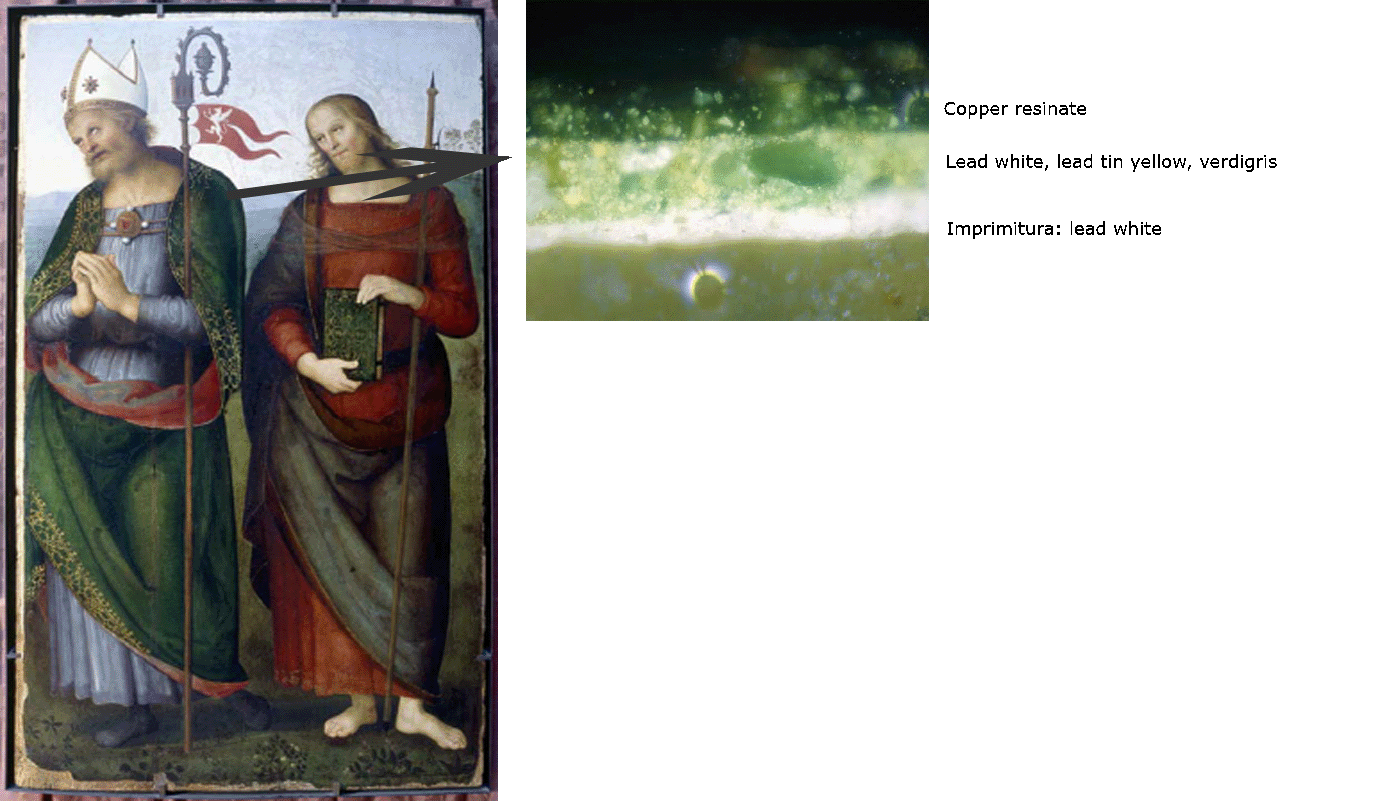
Brief description of Copper resinate:
A transparent jade-green glaze formed by dissolving copper salts in Venice turpentine. In the 15th and 17th centuries artists used copper resinate in order to add glaze on paintings laying a layer of copper resinate over verdigris to form a deep saturation of green color.
Names for Copper resinate:
| Alternative names: | Copper resin | ||||||
| Word origin: | The name "Copper resinate" comes from . | ||||||
| Non-English names: |
|
||||||
| Origin: | artificial | ||||||
| Chemical name: | Copper resinate |
Example of use by artists:

Optical microscopy image of a cross-section taken from the green gown of a Saint in a XIVth Century polyptych, Louvre
In this cross section of a sample taken from the green gown of a Saint can be distinguised a bottom layer of imprimitura (lead white). Over the imprimitura there is a layer made of lead white, leat tin yellow and verdigris. Above this one there is a paint layer of copper resinate.
Verdigris was usually used for landscapes and drapery. Verdigris was most commonly used in the 15th and 17th centuries because of its transparent abilities as a glaze on paintings. Artists of this time would glaze verdigris over lead white or a mixture of lead-tin yellow combined with a layer of copper resinate to form a deep saturation of green color.
(intro) - Cobalt green - Copper resinate - Emerald green - Green earth - Malachite - Verdigris - Viridian

